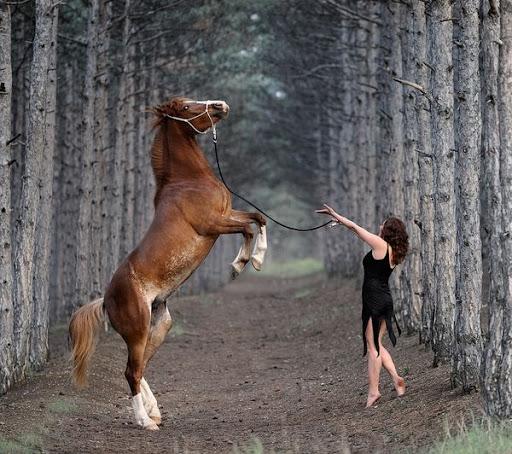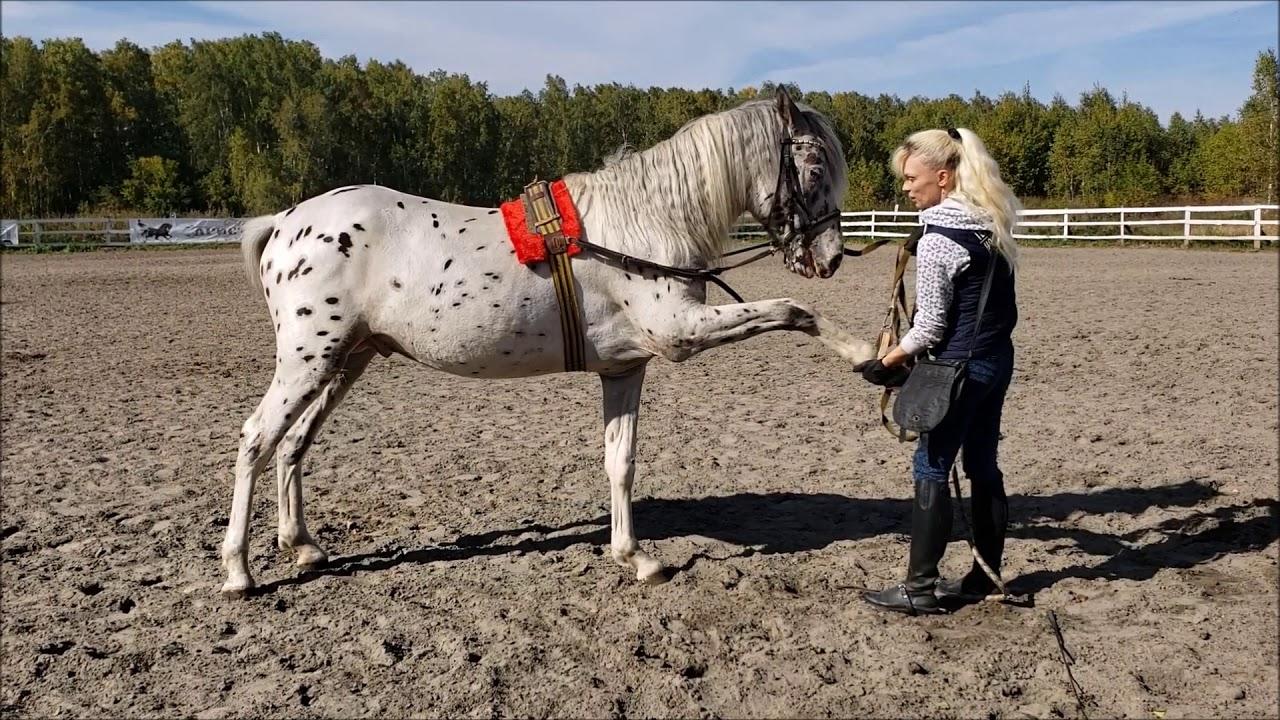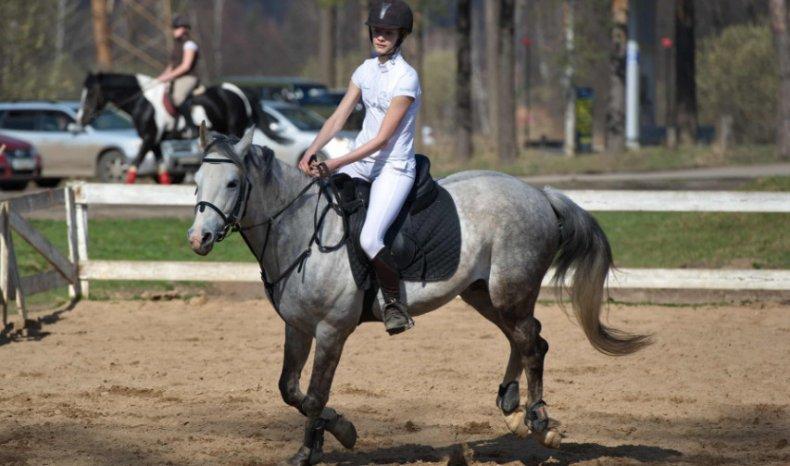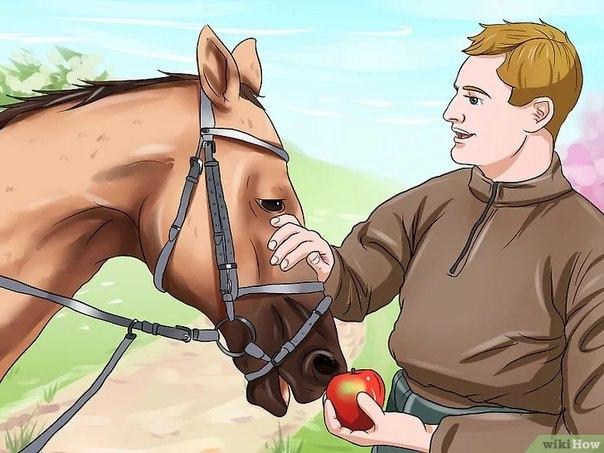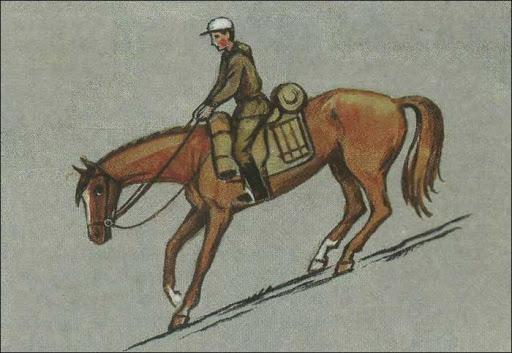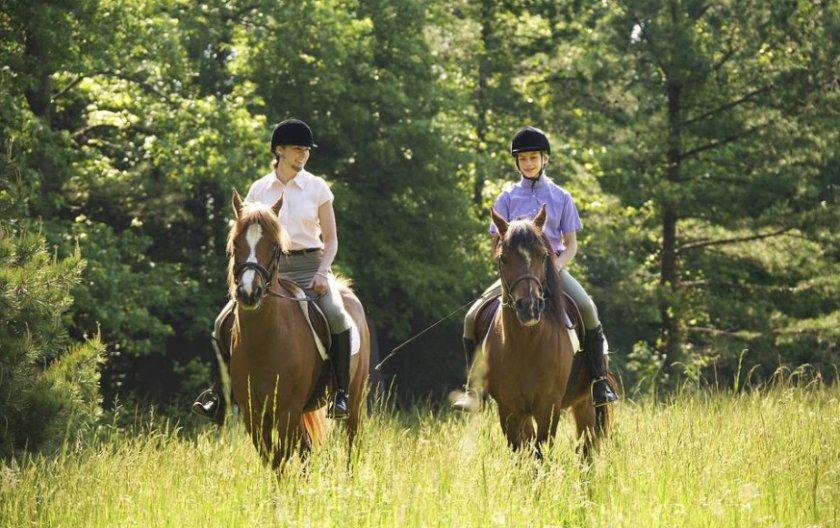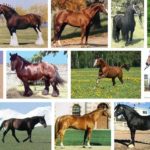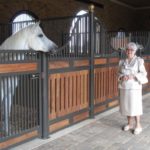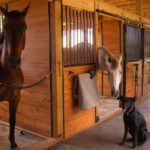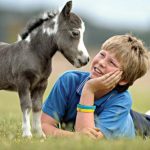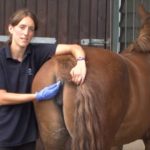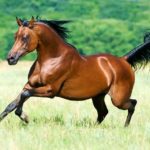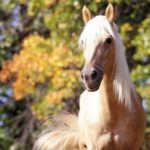The organization of horse training has many features. To teach an animal basic skills, it is worth studying its individual characteristics. The correct choice of age for training is of no small importance. Thanks to this, you will be able to get excellent results and not injure your pet. In addition, when conducting training, it is recommended to organize the right reward system.
- At what age should an animal be trained?
- Where to start training a horse
- Let's get to know each other better
- Addiction and liking
- Stages of basic training
- Taming a horse to use a halter
- Work on the line
- Teaching a horse to ride
- Getting used to the saddle
- Using the leg
- Reward in the form of treats
- Stopping and getting off a horse
- Other areas of training
- Warnings
- Training Tips
- Useful literature
At what age should an animal be trained?
Training of young horses usually begins at the age of three. In the first months of the animal, it is recommended to provide it with the most gentle regimen. It's a good idea to start working with lighter riders first. Their weight should not exceed 60 kilograms. By the age of 4, the load should be gradually increased. At 5-6 years old, it is acceptable to teach an animal to jump over logs. Using the right technique allows you to keep your horse active and healthy for up to 20-25 years.
Where to start training a horse
First of all, it is important to win over the horse. To do this, it is recommended to perform certain actions that help improve mutual understanding with the horse and provide it with self-confidence. This will create an excellent foundation for learning.
Let's get to know each other better
When training begins, it is worth getting to know the horse better. If there are bad habits, it is recommended to carry out appropriate work with the animal, which is aimed at weaning them off. In this case, it is worth using gentle methods of education.
It is not recommended to use harsh methods or frequent punishments. They will not give the desired results. To teach an animal to stand on a candle on command, it is recommended that it work with one person.
Immediately after meeting you, the horse may experience timidity and mistrust. This is becoming a common cause of learning problems. To achieve success in training, you must overcome shyness.
At this stage, it is important to provide the animal with rewards and perform actions that are attractive to him.This will gradually increase the horse's self-confidence and ensure a good rapport with the handler. While living in a stable, a horse becomes accustomed to external odors, so it is recommended to gradually accustom it to them.
Addiction and liking
Horses get used to being part of the herd. Usually horses occupy a certain level in the hierarchy of power. They also include people in such a system of relationships. Therefore, it is worth considering that the horse is able to identify the trainer as a competitor in the struggle for increased status. This can lead to some aggression. Typically, this problem occurs when the animal is not rewarded enough. As a result, it begins to bite rather than bow. It is recommended to divide all animal actions into several groups:
- important actions;
- useful actions that need to be taught - it is recommended to immediately reward the animal for this;
- bad actions - in this case, the animal is recommended to be punished immediately.
To teach a horse to perform certain actions, it should be provided with the right training, which combines gentleness and persistence. The coach must equip himself with a number of qualities - calmness, patience and firmness.
It is important to be able to take the place of the animal. This ensures better understanding with your pet. If irritation occurs during work, you should definitely take a break.
Stages of basic training
To ensure proper training of the animal at home, it is recommended to act gently and persistently.
Taming a horse to use a halter
This type of training is carried out on foals under 1 year of age. For an adult animal, using a halter can cause shock. In such a situation, subsequent training becomes difficult.Foals should begin to teach movement at the moment when the mother is nearby. Having a home object nearby helps calm the animal and prevent stress from occurring. During such training, the person should be to the left of the foal, positioned at the level of his shoulder. It is recommended to start leading a young animal from behind the mother, and then next to her or in front.
Work on the line
During the same period, you can train the animal to work with a bit and bridle. In two-year-old horses, the musculoskeletal system is not fully formed. During this period, it is prohibited to ride animals. However, at this stage it is necessary to accustom the horse to an empty saddle.
Teaching a horse to ride
Training a horse to ride includes a number of successive stages. In this case, it is necessary to follow certain rules.
Getting used to the saddle
It is recommended to accustom horses to the saddle at 2 years of age. In this case, it is permissible to use a simple technology:
- place the saddle without stirrups on your back;
- wait a certain time.
You should remove the saddle from the animal after it has calmed down. This is done as an incentive. When the horse understands that the new accessory is not dangerous, it is acceptable to begin tightening the girth. It is recommended to tighten it by 1 fastener each time. When the horse adapts to the girth, it is allowed to start racing with the saddle on the line.
Using the leg
This allows you to control your horse's hindquarters, make turns, maintain balance and move forward. It is prohibited to use a leg to beat animals. It is also not recommended to uncontrollably tap your heels on your sides. To send, it is permissible to press your legs tightly to your sides.
The main task of the leg is to send it forward.In this case, the rider presses 2 legs closely. It is recommended to do this directly behind the girth. The leg behind the girth at a distance of 15-20 centimeters helps control the movement of the hind legs when turning. This movement also allows or prohibits sideways movement. The horse must respond to any instructions from the rider. For insufficiently trained animals or to strengthen the team, it is recommended to use spurs and a whip. They are used as additional controls.
It is recommended to use a whip when an animal disobeys a leg push. However, hitting a horse is prohibited. It is enough to gently slap her on the rump or shoulder. This will help bring attention to the team. Spurs are considered an additional means of sending legs, but inexperienced riders are prohibited from using them.
Reward in the form of treats
Various delicacies are actively used in horse breeding. They help not only pamper the animal, but also reinforce acquired skills. The horse associates receiving a treat with tasty food. This creates pleasant associations.
With a certain number of repetitions, such an association is recorded in the subconscious. Thanks to this, the animal willingly follows commands.
The following are used as treats:
- Salt. It is this product that horses love most, and therefore willingly eat it from their hands. Salt contains a lot of sodium. It has a beneficial effect on the functioning of the digestive system and helps normalize the water balance in the body. In addition, salt helps accelerate recovery processes in muscle tissue after difficult physical activity.
- Carrot. Horses eat this root vegetable with great eagerness. The vegetable has a distinct taste and contains many vitamins that bring great benefits to the body.
- Crackers.This delicacy does not bring much benefit to the body. At the same time, horses are very fond of dried bread.
- Apples. It is recommended to first cut the fruit into 4 parts. Thanks to the consumption of apples, it is possible to strengthen the animal’s immunity and saturate its body with valuable substances.
- Sugar. Refined sugar cubes help lift a horse's spirits. However, it is not recommended to give her too much sugar.
Stopping and getting off a horse
Stopping and proper descent are considered important learning points. The safety of the rider and the minimization of the animal’s discomfort depend on this. For proper descent you should do the following:
- Grab the animal tightly by the mane and hold the reins at the same time. Some instructors allow gripping the front of the saddle. But it is important to consider that it can turn on its back.
- Lean forward. At the same time, it is not recommended to loosen the grip.
- Carefully place your right leg over the animal's back.
- Slowly lower yourself to the ground and remove your left leg from the stirrup.
- It is allowed to descend only to the left side of the horse.
Other areas of training
There are other areas of training:
- Racing training. The main goal is to develop agility and endurance. During training, the animal moves in 3 main gaits - walk, gallop, trot. It is important to achieve a stable and fast canter. It's called a quarry.
- Long run training. Jumping over long distances is considered a serious test for animals and people. Only strong and healthy horses are allowed to compete. Most often they are chosen based on the results of short distance races.
- Jumping training.There is an equestrian discipline called show jumping. Its essence is to overcome obstacles with a rider on your back. Obstacles differ in height and width.
Warnings
Training is considered quite a difficult task. A beginner should only train a horse under the supervision of an experienced instructor. The more complex the horse's character, the more skills the trainer must have.
When training, you should follow precautions and some rules:
- there is no need to give the animal too much stress;
- It is recommended to train a horse systematically, adhering to a certain scheme;
- Any training should be completed with a walk - this will help the animal calm down and dry out.
Training Tips
For training to be successful, it is recommended to adhere to the following rules:
- The animal must not be stressed too much. This is especially true for young horses.
- The duration of the workout should be 45 minutes. There are many observations that confirm that this is the time when an animal can remain in concentration and adequately perceive commands. A trained and prepared horse can be trained for longer.
- It is important to create a training program. Training should not be spontaneous. It is recommended to plan it carefully. The animal gets used to a specific order of actions.
- It is recommended to finish your classes with a step. This is especially important if the animal is tired and sweaty. A calm step will help the horse recover.
Useful literature
To ensure effective training, it is recommended to read the following books:
- V. Museler, “Textbook of Horseback Riding.”
- R. Klimke, “Dressage of a young sport horse.”
- J. M. Dillon, “Equestrianism. Jumping technique and style."
Horse training is considered a complex and exciting process. To achieve success in this matter, you should follow a number of rules and recommendations.

